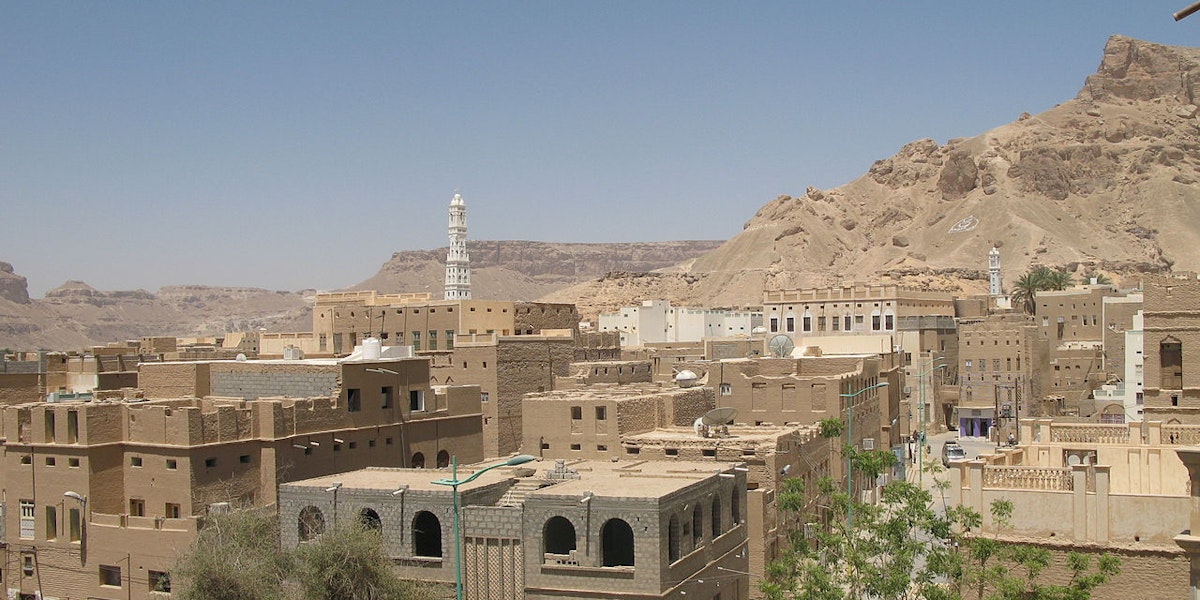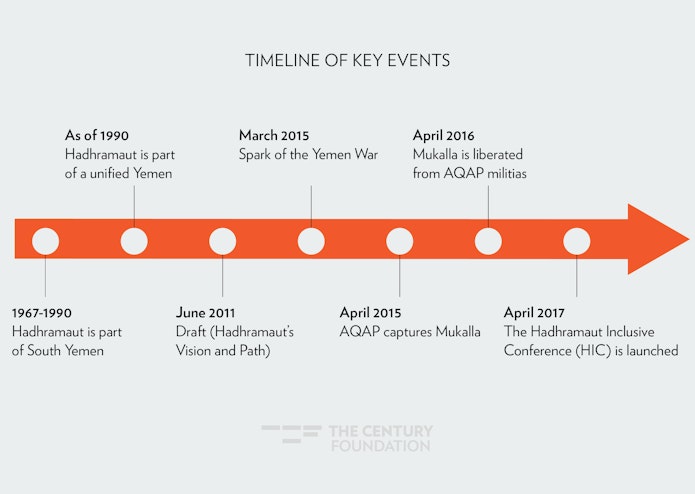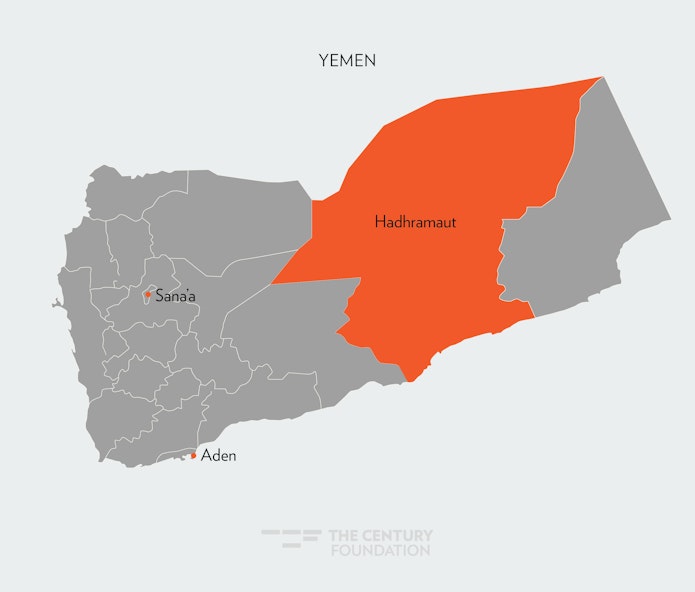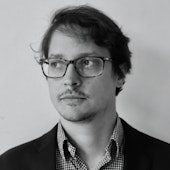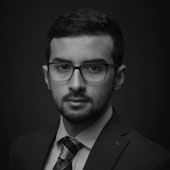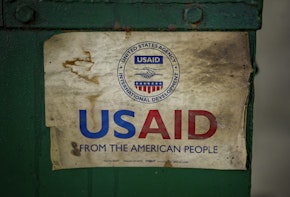Yemen faces a critical moment. After almost six years of continuous war, the conflict in the country has weakened the state while disrupting the social and political fabric of Yemeni society. Today, the country is at risk of entering a cycle of ever-increasing fracturing, as its bitter conflict exacerbates existing divisions or creates new ones. Any peace process, political settlement, or effort at de-escalation that fails to account for the conflict’s regional dynamics and the relationship between Yemenis and the central state risks sowing the seeds of future conflict. The role of the central government is also important: international and Yemeni stakeholders need to devote significant efforts to restoring and rebuilding the capacities of state institutions.
At this precarious juncture for Yemen, peace-building and state-building efforts will require bottom-up models that focus on accounting for wartime shifts in power. Such efforts will need to work to ameliorate local tensions, to facilitate the transition of postconflict Yemen into a more effective governance system.
Fortunately for Yemen, there are examples of subnational areas that have enjoyed a modicum of success and cohesion, even during the war, and which the beleaguered country can draw upon as “bottom-up” models for peace and state building. The governorates of Hadhramaut and Ma’rib are two such examples. In Hadhramaut especially, local authorities and local communities have played a crucial role in preventing the governorate from being stuck in a devastating civil war or trapped in political tensions, while also uniting to lobby for the governorate’s collective concerns with national-level authorities, most notably gaining the devolution of a share of oil resources. Perhaps even more importantly, the governorate’s local communities were able to come together in 2017 to independently organize a conference, called the Hadhramaut Inclusive Conference, to unify the political vision of Hadhramaut.1 The conference presented a consensus on revenue sharing and autonomy that has nudged the governorate toward greater local control over economic resources and security.
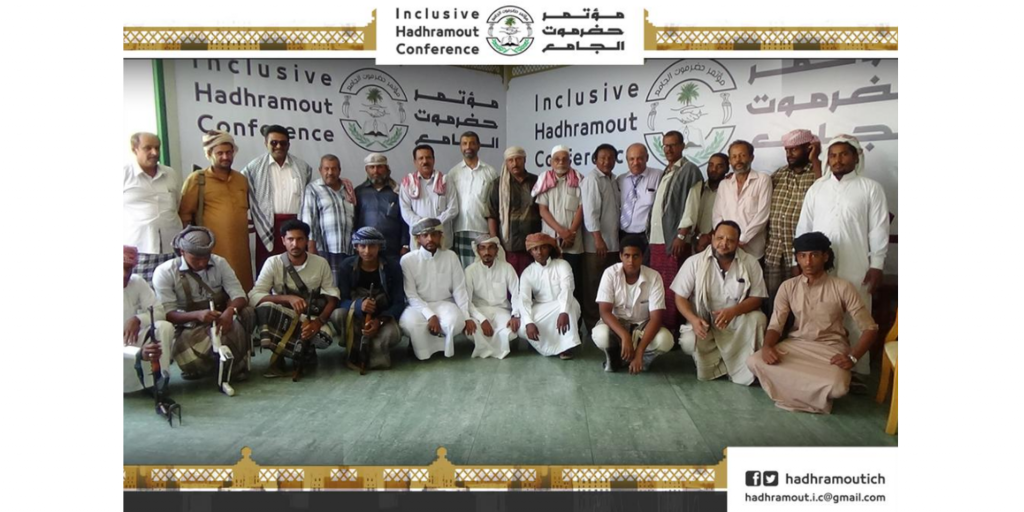
None of this is to say that Hadhramaut has been immune from the fallout of Yemen’s war. The governorate has been effectively bisected into two different sociopolitical ecosystems, while internal and regional divisions have threatened to disrupt its relative calm. Still, local elites’ and stakeholders’ willingness and ability to pursue inclusive political organizing have often allowed them to transcend the divides—at least on a theoretical level. These groups and individuals have put forward consensus-based proposals that remain relevant both for the current movement and for postwar trajectories.
Hadhramaut’s unique model is a result of the intersection of a long-standing, unique Hadhrami identity—both within Yemen and in the centuries-old Hadhrami diaspora—and a de facto decentralization. The war has fragmented Yemen’s political system and created a power vacuum to an extent that has arguably never been seen in the country’s modern history. Yet the broader outlines of a locally driven, “bottom-up” federalism have emerged in Hadhramaut—even as the central government of Yemen has weakened. And so far, Hadhramaut has succeeded in mitigating or avoiding the worst outcomes of Yemen’s violent internal conflicts. The governorate’s model can be instructive for peace and stability in other governorates as well, especially if Hadhramaut’s history is properly understood.
Hadhramaut’s unique model is a result of the intersection of a long-standing, unique Hadhrami identity—both within Yemen and in the centuries-old Hadhrami diaspora.
In the context of the current war, the bulk of international discourse on Yemen has largely focused on formal political negotiations—“Track One” processes, in the argot of international negotiators. International discourse has paid little attention to local dynamics. But developments outside of traditional power centers in Yemen are bound to shape the country’s future as much as higher-level political dynamics. Notably, owing to its economic potential, its fossil fuel wealth, and its position at the intersection of national-level and southern Yemeni politics, Hadhramaut is destined to play a significant role in postconflict Yemen. And, with Yemen increasingly fractured, the intersection between Hadhrami identity and governance constitutes a significant test case for the potential role of consensus-based coalition building and stabilization, both for Hadhramaut and for its relationship with the rest of Yemen. Hadhramaut’s experience thus presents both a model for success and a warning: it illuminates a possible path toward a shared vision that transcends the wider political divides facing the country, but also shows how years of conflict have widened fractures and divisions that, in the past, may have largely remained below the surface. Thus, the governorate’s experience is relevant not just in Yemen, but throughout the wider region, particularly as increasing state fragility deepens the importance of internal dynamics and the necessity of bottom-up approaches in the many states dealing with conflict. Hadhramaut shows that identity-based, bottom-up approaches can be seen as a constructive tool for both peace building and state building in societies riven by conflict. While acknowledging the area’s struggles, Hadhramaut’s model can be used as a blueprint in other polities and communities in Yemen and in the region.
A Distinct Identity
Among the key attributes that set Hadhramaut apart from the rest of Yemen is its distinct identity, which includes one of Yemen’s most prominent diasporas. This identity has played a key role in much of the evolution of the governorate’s politics, particularly on the local level.
While the concept of a geographical place called Yemen predates Islam, the current Yemeni state coalesced over the past century. The North Yemen Civil War of 1962–70, and the 1962 dissolution of the theocratic imamate, led to the creation of the Yemen Arab Republic (YAR) with its capital in Sana’a. (The YAR lasted until 1990 and included the northwestern portion of today’s Republic of Yemen.) Concurrently in the south, the collapse of the British colonial project and the empire’s exit from Aden saw, in 1967, the rise of a Marxist state—the People’s Democratic Republic of Yemen (PDRY, also known as South Yemen). The postcolonial period was thus marked by dueling state-building projects in the north and south, and—partly as a result of globalization—the rise of various forms of Islamism and other foreign influences and ideas. In the face of these trends, regional Yemeni identities began to evolve, and continued to do so even as both Yemeni states unified in 1990. The 2014 Houthi takeover of Sana’a and the resulting internationalized civil war has further fractured national and regional Yemeni identities.
Even within the context of Yemen’s regions’ often multifaceted identities, Hadhramaut has long stood apart. For a mix of political, societal, and historical reasons, Hadhramis have developed a unique identity. In some regards, this is a function of Hadhramaut’s centuries-old diaspora: from Indonesia to Saudi Arabia to the Horn of Africa, Hadhramis are often seen—and see themselves—as constituting a culturally distinct community, something that is often in dialogue with their identity as Yemenis.
Hadhramaut is Yemen’s largest governorate, and part of an even larger premodern Hadhramaut region that reached into present-day Oman. The governorate, with twenty-eight districts, covers some 74,000 square miles in the southeastern part of Yemen, stretching from the border with Saudi Arabia in the north to the Gulf of Aden in the south. The city of Mukalla is Hadhramaut’s capital; neighboring governorates include al-Mahra on the east and al-Jawf, Ma’rib, and Shabwah governorates on the west. The governorate boasts an oil production of 100,000 barrels per day (bpd), accounting for about half of Yemen’s current oil wealth.2 About 1.4 million people reside in Hadhramaut, out of Yemen’s total population of 29 million.3 An additional 14 million ethnic Hadhramis live in a diaspora around the world.4 Most of these Hadhramis in the diaspora don’t have Yemeni passports, refer to themselves more as Hadhramis than Yemenis, and are not involved in Yemen’s politics. However, they often take interest and participate in the humanitarian and economic affairs of the governorate. The uniqueness of Hadhrami identity is related to the strength of diasporic communities—in the Gulf states, East Africa, and elsewhere in the Indian Ocean—that have preserved a strong sense of belonging to their origin region, and have nurtured a sense of responsibility toward the overall Hadhrami cause. In Yemen and in the diaspora, Hadhrami identity is buttressed by distinctive characteristics, including dress, speech, religious rituals, and marriage traditions.
Most Hadhramis in the diaspora don’t have Yemeni passports. However, they often take interest and participate in the humanitarian and economic affairs of the governorate.
The strength and conception of Hadhrami identity has historically fluctuated in response to a variety of external influences and crises. The entrance of the British in the nineteenth century and, post-independence, the consolidation of power under the PDRY, wrought significant political change and societal upheaval throughout the country, including in Hadhramaut. The rise of multiparty politics after Yemen’s 1990 unification and the emergence of the Southern Movement and opening of political space after Yemen’s 2011 uprising led to the rise of a variety of political alignments in the governorate. However, the current civil war and the emergence of a series of patterns of de facto autonomies have created a new set of challenges, while also raising greater questions about how Hadhramaut fits into the rest of Yemen. These debates are a corollary to wider discussions regarding the shape of the Yemeni state itself, and are particularly relevant considering Hadhramaut’s position as the location of the home of much of Yemen’s fossil fuel wealth. In this context, manifestations of organized Hadhrami identity have grown stronger.
One factor contributing to the distinctiveness of the Hadhrami identity is a long history of travel—Hadhramis have centuries of practice maintaining social bonds not only within Hadhramaut but with diaspora communities across the ocean. The first diasporic Hadhramis traveled either for trade or as part of a “religious diaspora,” which had tremendous influence in spreading Islam throughout the Indian Ocean region.5 One unique trait of the early Hadhrami diaspora was migrants’ adaptiveness to their destinations. But while the Hadhrami diaspora was generally able to integrate into the societies of these destinations—in many cases, even rising to key roles in local politics and business—its members did so without letting go of Hadhrami traditions. They also retained their linkages to Hadhramaut, often even returning to marry. Another distinctive characteristic of the diaspora is the broader traditional geographical patterns of their migration. Families from the inland portion of Hadhramaut largely migrated to southeastern Asia; the families from Wadi Dowan, a valley in coastal Hadhramaut, largely traveled to the Gulf region, particularly Saudi Arabia; and the families from other parts of coastal Hadhramaut largely settled in India and East Africa.6
Hadhramis have been able to preserve their identity in Hadhramaut and in the diaspora due to two main factors. The first is the hierarchical social construction of the Hadhrami community. In a form parallel—though not identical—to similar structures elsewhere in Yemen, there are four main hereditary groupings within the Hadhrami community that relate to the religious or social status of the community’s members.7 The first grouping, “sada’a,” comprises families descended from the Prophet Mohammed, such as the Al Sakkaf and Al Attas families; its members have often attained high religious status in the communal hierarchy, particularly within Hadhramaut’s prominent Sufi orders. This grouping was also a key part of the religious diaspora that spread Islam throughout the Indian Ocean region. The second grouping, “mashaikh,” comprises individuals who have high social status and are highly respected by their community, such as the Al Amoudi, Al Ba Wazeer, and Al Ba Gamal families. (For example, the late Abdul Qadir Bajamal, prime minister of Yemen from 2001 to 2007, was from the Ba Gamal family). The third grouping, “qaba’il,” includes groups that are affiliated with a particular tribe—generally, tribespeople in Yemen constitute about 70–80 percent of society.8 The fourth group, “dhaafa,” includes marginalized groups that sit at the bottom of the social hierarchy and work in low-skilled jobs.9
The second factor contributing to Hadhrami identity preservation is the “kafa’a” marriage system, a group-based kinship that limits marriage to members of the same social groups.10 For instance, Hadhrami men and women from the sada’a group have traditionally only married into sada’a families; the same goes, to a lesser extent, for the other groups. Marriages outside the same groups do take place in Hadhramaut, but are not common. It is easier for Hadhrami men to marry women from outside their social group than vice versa. It is even more challenging for Hadhrami women to marry non-Hadhrami men, mainly because Hadhrami women perform an essential and traditional gender role inside the Hadhrami community by maintaining local traditions and transmitting these principles to the next generation.11
While Hadhramaut holds a solid social identity compared to other governorates and regions in Yemen, the governorate does not have a commensurate political identity. And throughout the modern history of Hadhramaut, it has survived as an independent governorate that has been viewed as being comparatively tangential to political struggles in Yemen’s power centers, whether when ruled from Aden—as under the PDRY (South Yemen)—or, since unification, from Sana’a.
War Threatens to Divide Hadhramaut
Despite Hadhramaut’s history of a distinct and coherent identity, it has also at times suffered from divisions, and the fallout from Yemen’s ongoing conflict has proven particularly divisive.
The dynamics of the current conflict have caused a resurgence of division in Hadhramaut, arguably unseen since the days of the Kathiri and Qu’aiti Sultanates, which ruled over the province for centuries prior to the establishment of the PDRY. Hadhramaut has remained outside of the control of the Houthis and—after a significant prewar period of occupation by figures aligned with al-Qaeda in the Arabian Peninsula (AQAP)—has been formally under the control of the internationally recognized government of Yemen. Still, it has been shaped by the wider dynamics of the conflict, which have effectively engendered the emergence of two somewhat distinct political and security ecosystems: the inland Wadi, or Valley, and Sahl, or Coast.
Since the start of the conflict, Hadhramaut has found itself split into the control of different power centers, fueling the emergence of a Sahl–Wadi divide. This division is arguably the greatest since the unification of the governorate under a single administration unit following the overthrow, in the 1960s, of the abovementioned Kathiri and Qu’aiti Sultanates. Even though the tension between Wadi and Sahl has yet to escalate into anything resembling significant armed conflict, many in the governorate cast it as a potential future risk, viewing Hadhramaut as being at a critical turning point.
Since the start of the conflict, Hadhramaut has found itself split into the control of different power centers, fueling the emergence of a Sahl–Wadi divide.
The Sahl–Wadi tension manifests in two broad ways. For one, there are the different interests of regional and national stakeholders in Hadhramaut. There are divergences in how Saudi and Emirati strategies have affected the governorate. Though key strategic allies, the two Gulf powers have their own respective interests. Saudi Arabia continues to support Yemeni military units based in the First Military Region (a Yemen Armed Forces administrative area that encompasses the Wadi and inland parts of neighboring al-Mahra governorate), with the aim of protecting the southern border of Saudi Arabia. In contrast, the United Arab Emirates has provided political backing for the Southern Transitional Council (STC)—which is positioned reflexively against Islah, a prominent Yemeni Islamist political party—and military backing for the Hadhrami Elite Forces in coastal Hadhramaut. This Emirati backing is part of Abu Dhabi’s priority of preventing forces sympathetic to political Islam—or tied to Qatar or Turkey—from gaining sway over key coastal areas.12
The second manifestation of tensions is the way that the STC and factions loyal to the internationally recognized government compete for power on the ground. STC supporters have demonstrated in the streets against the continued presence of what they deem “northern” and “Islah-aligned” troops in inland Hadhramaut; during times of tension with the government, some STC leaders have gone as far as to publicly call for Seiyun and nearby areas to be “liberated” from “northern occupation.”
A review of the course of the war in the Wadi and Sahl of Hadhramaut sheds more light on how the two subregions have diverged in recent years, despite Hadhramaut’s historically strong identity.
The Wadi
In comparison to the rest of Yemen, Wadi Hadhramaut has been totally untouched by the war. Nonetheless, the conflict has reshaped its relationship with the rest of the country, including areas of Hadhramaut itself.
The military network in Wadi Hadhramaut is intricate and fluid, in contrast to the network in the Sahl. The military network in the Wadi has remained comparatively untouched, at least structurally speaking, by the dramatic changes wrought by the Houthi takeover of Sana’a and the subsequent civil war. Yemeni-government-allied military forces under the Seiyun-based First Military Region are the main military force in Wadi Hadhramaut. These are broadly made up of two components: those historically loyal to former president Ali Abdullah Saleh, and those seen as more aligned with longtime military leader and current vice president Ali Mohsen al-Ahmar and networks affiliated to Islah, a prominent Yemeni Islamist political party. In contrast to other parts of the country—most notably, Sana’a and the northern highlands—the bulk of traditional Saleh allies in the First Military Region publicly aligned with the internationally recognized government from the start of the conflict.13 The current commander is Saleh Mohammed Taimus, a military veteran originally from Abyan governorate, which is also the native region of current president Abdu Rabbu Mansour Hadi. Taimus is publicly perceived as an ally to networks affiliated both with Hadi and with Islah.14
The forces of the First Military Region in Wadi Hadhramaut have been subject to some local controversy, with some in Hadhramaut—particularly backers of the STC—going so far as to describe them as an occupying force (as noted above).15 While certainly not universal, these complaints arise in part from many locals’ resentment of what they perceive to be Hadhramaut’s long-standing marginalization by a highly centralized political system. These complaints are largely related to two wider issues. First, the bulk of the First Military Region’s forces still hail from northern governorates, even though the region is centered in Seiyun and solely encompasses areas in the formerly independent south.16 Second, locals complain that they have been cut out of the financial benefits of key revenue-generating territories in the governorate, such as the Masila Basin, which contains a significant proportion of Yemen’s publicly announced oil reserves, and al-Wadiah border crossing in Al Abr district, which connects Hadhramaut with Saudi Arabia and generates significant customs revenue.17
Although Hadhramaut is one of the few governorates in Yemen that has avoided the direct effects of the country’s civil war, insecurity in Wadi Hadhramaut remains a crucial challenge. Nonstate groups, such as AQAP, have taken advantage of the uneven security environment in the Wadi to target Yemeni army officials. In June 2018, the security director of Shibam, a district in Wadi Hadhramaut, was assassinated.18 In another incident, in October 2019, Al Qatn district witnessed two separate assassinations.19 Divisions in Hadhramaut have also been blamed for other issues, such as the uneven provision of public services in the Sahl.
The Sahl
As the Wadi remained relatively stable compared to much of Yemen, coastal areas of Hadhramaut experienced significant changes, leading to the creation of a dramatically new political environment in both Mukalla, the governorate’s capital, and its environs.
In April 2015, al-Qaeda in the Arabian Peninsula took advantage of the deteriorating security in Mukalla to take control of the city and neighboring coastal areas. Seizing control of the city’s revenue sources and government institutions, they acted as a de facto state.
In April 2015, AQAP took advantage of the deteriorating security in Mukalla to take control of the city and neighboring coastal areas. Mere days after the launch of Operation Decisive Storm—the 2015 Saudi-backed military campaign to push back the Houthis and restore Yemen’s internationally recognized government to power—Yemeni military forces based in Mukalla lost control of the city to rebranded AQAP fighters calling themselves the “Sons of Hadhramaut.” Seizing control of the city’s revenue sources and government institutions, they operated as a de facto state in Mukalla, providing essential services and enforcing their strict interpretation of sharia.20
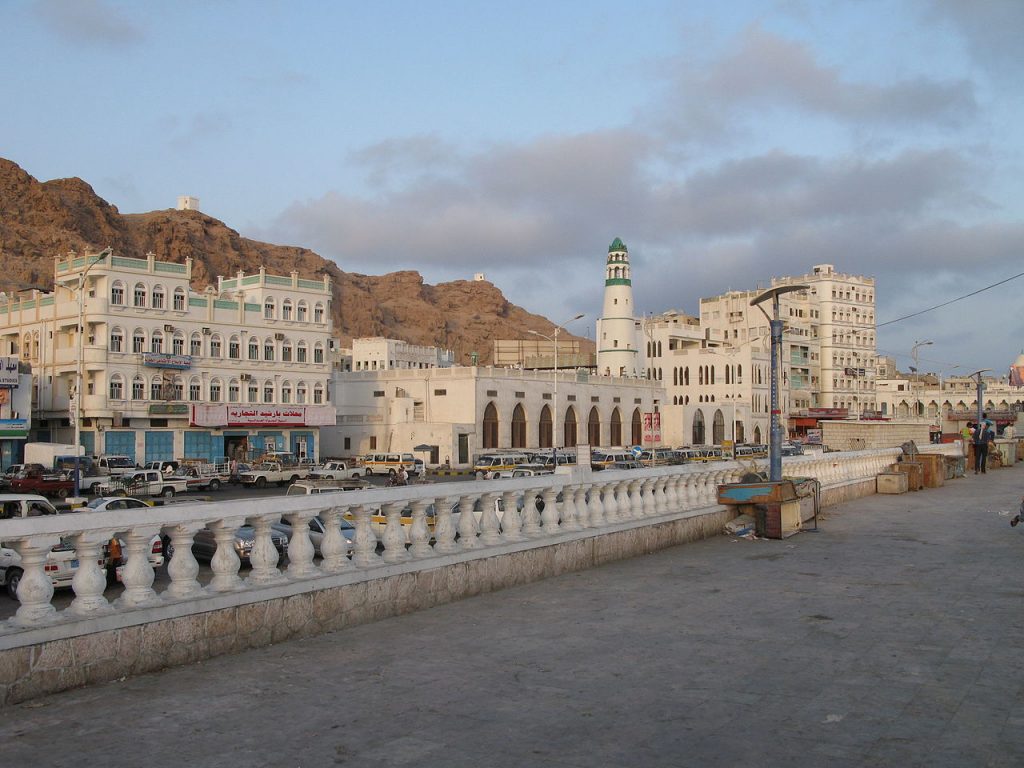
In response, the Saudi-led coalition began a program—largely spearheaded by the Emiratis—to train and equip Hadhramis to serve as a local force to uproot the AQAP militants from Mukalla and the coast. Faraj Salman Al Bahsani, a long-exiled military leader from the governorate, was convinced by the coalition to return and command these Hadhrami troops, which took the form of a reconstituted Second Military Region and the Hadhrami Elite Forces, an Emirates-backed paramilitary force.
In April 2016, these forces, backed by air and ground support from the Emirates and logistical support from the United States, began their offensive, managing to take hold of Mukalla in just a few days.21 Unlike the military troops in Wadi Hadhramaut, who largely hail from outside of the governorate, the approximately 30,000 fighters of the Hadhrami Elite Forces and the Second Military Region are drawn almost entirely from a variety of tribal areas in Hadhramaut.22 The military leadership in Hadhramaut, led by Al Bahsani, made efforts to ensure these fighters remained loyal to the Second Military Region, rather than to a particular tribe or external group.23 In 2017, Al Bahsani was appointed governor of Hadhramaut, a position he has held since.
By aiding in the recapture of Mukalla, the Emirates achieved two strategic objectives. First, Mukalla became a major locus of the Emirati counterterrorism campaign in southern Yemen. The focus on Mukalla occurred amidst a wider strengthening of the Emirates’ partnership with the United States in counterterrorism operations in Yemen—as traditional American counterterrorism partners in the Yemen Armed Forces fractured. Various Emirates-backed armed groups, including the Hadhrami Elite Forces, carried out military operations against AQAP in southern areas, including west of Mukalla, Shabwah governorate, and Al Mahfad district in Abyan.24 Second, the Emirates established a new geopolitical sphere of influence in southern Yemen, gaining sway over the main commercial ports in the region, which was aligned with Abu Dhabi’s wider aim of protecting its interests along the Arabian Peninsula coastline—most notably, those related to maritime security.25
In June 2019, after four years of on-the-ground engagement as members of the Saudi-led coalition fighting in the current war, the Emirates announced its phased military withdrawal from Yemen. Although the Emirates scaled down its forces in many other parts of the country, some Emirati forces have remained near Mukalla.26
The effects of the conflict on Hadhramaut have intersected with the divisions described above, and have affected the administrative governance of the governorate. Although Al Bahsani has managed to temper tensions between the Sahl and the Wadi by maintaining some appearance of neutrality—all while keeping good relations with Saudi Arabia and the Emirates—his authority is often understood to be comparatively limited within Wadi Hadhramaut. Since his appointment as governor almost four years ago, he has spent the bulk of his time in Mukalla, only venturing to the Wadi for short visits.27 Many interviewees have gone as far as to compare Al Bahsani’s influence in the Wadi with that of the Islah-affiliated deputy governor, Esam Al-Kathiri, who is seen as holding significant sway in Wadi Hadhramaut.28
Efforts at Unity
Over the past decades, a number of initiatives have tried to synthesize the different views of Hadhramis under a unified vision. Consistently evolving, these initiatives have largely aimed to transcend the governorate’s political divisions while uniting key stakeholders to strengthen efforts to push for a platform of key reforms and proposals.
| Key Hadhrami Figures | ||
| Name | Position | |
| 1 | Faraj Al Bahsani | Governor and head of the Hadhrami Elite Forces in Hadramaut |
| 2 | Amr in Habresh | First deputy governor and head of HIC |
| 3 | Esam Al Kathiri | Deputy governor of Wadi Hadhramaut |
| 4 | Abdullah Bogshan | Saudi-Hadhrami businessman |
| 5 | Riyad Al Akbari | Education minister, secretary general of HIC |
| 6 | Khaled Bahah | Former vice president and prime minister of Yemen |
| 7 | Ahmed Bin Dagher | President of the upper house of parliament, aligned with President Hadi |
| Mohammed Al Aidarous | President of the upper house of parliament, aligned with the Houthis | |
| 8 | Ahmed ben Brayk | Former Hadhramaut governor and president of the STC national assembly |
| Source: Adam Baron and Monder Basalma | ||
One of the first and most pronounced initiatives was the drafting of the document “Hadhramaut: The Vision and the Way.” The Hadhramaut National Council, which included political, religious, and academic figures from the governorate, drafted the document in Mukalla in June 2011, in response to the power vacuum engendered by the country’s ongoing Arab Spring-inspired uprising.29including proposals for federalism and revenue-devolution—have remained key focuses of discourse in the governorate.
The Formation of the Hadhramaut Tribal Alliance
Elites dominated the process of drafting “Hadhramaut: The Vision and the Way”—in addition to many other aspects of Yemen’s transition after Saleh’s twenty-two-year presidency ended in 2012. But a few years later, events in Hadhramaut reawakened long-dormant grassroots activity in the governorate. The 2014 emergence of the Tribal Alliance, later rebranded the Hadhramaut Tribal Alliance (HTA), constituted the most significant example of Hadhramaut-focused political organization in years, particularly regarding its ability to directly pressure the central government. In response to the controversial killing of tribal leader Sa’ad Bin Habresh by military forces in Seiyun, Bin Habresh’s nephew, Sheikh Amr Bin Habresh, established the HTA, which consisted of various tribes and clans from both the Wadi and the Sahl. In December 2013, the HTA announced a popular uprising (“haba sha’abiah”) and carried out demonstrations in several areas of the governorate. Among the demands were the handing over of the tribal leader’s killer and the departure of the northern military forces based in Seiyun.30 Third-party mediation eased the tension between the HTA and the Hadi government, and tribal arbitration saw the government hand over 1 billion rial (at that time, the equivalent of around $4 million), around two hundred rifles, and twenty cars as an “adal,” in compensation. (An adal is a mediation tool in tribal society where two parties in conflict accept the judgment of a third party—usually an objective sheikh—who mediates the process. Adal represents a form of restitution to the wronged party to prevent further escalation—paid in guns, cars, land, or money.)31
After years of elite-dominated decision making, events in Hadhramaut in recent years have reawakened long-dormant grassroots activity in the governorate.
Many Yemeni political analysts cast the emergence of the HTA as a watershed moment in political mobilization in the governorate. In the ensuing years, the HTA has maintained a position as a key player in Hadhramaut’s political and security life, with its leaders even taking on administrative roles. Since 2019, Sheikh Bin Habresh has served as the first deputy governor in Hadhramaut, an indication of the increasing overlap between the state and tribal communities. The HTA also coordinated with Saudi Arabia and the Emirates in efforts to liberate Mukalla from AQAP-aligned fighters, providing support for the retaking of the city in April 2016.32 Several tribal members from the HTA were enlisted in the Hadhrami Elite Forces, which fought against AQAP.33
The Hadhramaut Inclusive Conference
In mid-2016, the HTA called for an “inclusive conference” to shape the governorate’s political vision.34 In some sense, the conference represented a fusion of both local leaders and traditional elites. Its deliberations were framed around the wider question of how to position the governorate following the liberation of Mukalla from AQAP. Preparations for the comprehensive conference took almost six months, managed by the head of the preparatory committee, Sheikh Bin Habresh.35 The Hadhramaut Inclusive Conference (HIC) took place in April 2017, in Mukalla, with some 3,000 participants. The conference managed to bring a diverse collection of influential social and political figures into the presidency committee, including erstwhile rivals such as Muhsin Basura, a key Islah party leader and national parliament member from Hadhramaut, and Ahmed Ba Mualim, the head of the STC in the governorate.
The participants came from diverse backgrounds, as well: some 30 percent were from the HTA, 30 percent were from other political entities, 20 percent were women and representatives from youth-focused nongovernmental organizations, 10 percent represented civil society organizations, and 10 percent represented the Hadhrami diaspora.36 The conference resulted in several outcomes, including calls for greater autonomy, representation, and greater devolution of power over the security sector.37 Since its first meeting, the HIC has evolved into a permanent organization, and has aimed to maintain political relevance. It has established an office each in the Sahl and Wadi, while its secretary general, Tarek Al Akbari, has joined the newly formed government as minister of education.
Despite its ability to attract a diverse coalition of backers, the HIC has still received some criticism from various members of the Hadhrami community. While the conference was being prepared, a separate committee chaired by Abdulmajed Wahden was formed to find effective ways to correct the perceived unilateral decision-making of the preparatory committee.38 The corrective committee had two main objections. Its first was that there was a lack of criteria and mechanisms for selecting the preparatory committee. Second, it objected to the unbalanced representation of the HIC’s participants—the preparatory committee arbitrarily came up with participation quotas and selectively chose the participants without the agreement of other political and social representatives inside Hadhramaut and in the diaspora.39 When the HIC first convened, some Hadhrami factions still felt unrepresented and left it, creating their own alliances, such as the Hadhramaut Tribal Alliance in Wadi (a splinter of the main HTA). The second-largest tribal alliance, it is headed by Abdullah Al Kathiri, the sheikh of the Al Kathir tribe and a member of the Yemeni Shura Council (the upper house of parliament).
The Southern Transitional Council
Amidst the formation of Hadhramaut-focused bodies, many in the governorate have continued to prioritize southern issue-focused politics. While numerous figures have been active in both the governorate and the larger southern region of Yemen, there have nonetheless been tensions between the two political spheres—particularly since the emergence of the STC, which has pushed forward the question of whether local elites and power brokers should prioritize a potential return to pre-1990 borders, or simply work for greater autonomy in Hadhramaut.
The STC was set up in May 2017. Several influential figures with ties to Hadhramaut joined the STC leadership, including Aden deputy governor Adnan Al Kaf and former Hadhramaut governor Ahmed ben Brayk. The STC quickly moved to establish a branch in Mukalla. Mohammed Jafar Abubakr, a philosophy lecturer in Hadhramaut University, heads the executive STC leadership in the governorate. Many of the STC’s Hadhrami members were pulled from the Southern Movement, which has been active in the governorate since its emergence across southern Yemen in 2007.40 The Southern Movement has played a prominent role in Hadhramaut, and in turn, a number of Hadhrami figures have played a key role in the Southern Movement, which held numerous protests and demonstrations in cities across the governorate.41 Simultaneously, key PDRY leaders Ali Salem al-Beidh and Haidar Abu Bakr al-Attas took part in Southern Movement-related politics from their bases in exile abroad. Since its establishment, the STC has gained momentum in Sahl Hadhramaut. There are many manifestations of support for the STC on the coast. For example, the flags of the PDRY (pre-unification South Yemen) are dominant in Mukalla and throughout other cities in Sahl Hadhramaut. And in July 2020, the STC organized demonstrations in Mukalla supporting the STC’s declaration of self-rule over the southern governorates. In some regards, these protests functioned as strategic leverage to pressure the national government during negotiations for the implementation of the Riyadh Agreement, a November 2019 pact between Yemen’s government and the STC that, among other provisions, called for the inclusion of the latter in Yemen’s government.
Although the Emirates supports both the Hadhrami Elite Forces and the STC, the local community in Hadhramaut does not view the Hadhrami Elite Forces as armed wings of the STC—in contrast to, say, forces like the Security Belt in Aden, Lahij, and Abyan, which largely function akin to armed wings of the STC. The Hadhrami Elite Forces, which mainly focus on internal security affairs in the governorate, have mostly avoided directly siding with either the Hadi government or the STC. In August 2019, as clashes between the Hadi government and the STC escalated, the Hadhrami Elite Forces stayed out of the fight, backing neither STC-allied forces nor the government-affiliated forces in Hadhramaut’s neighboring governorate, Shabwah. Even when the STC declared self-rule in April 2020, Al Bahsani (Hadhramaut’s governor and the head of the Hadhrami Elite Forces) condemned the declaration; since then, there have been increasing tensions between Al Bahsani and the STC.42 In mid-2020, Al Bahsani arrested several academics and officers, allegedly affiliated with the STC, for their alleged role in an assassination plot against him when he was visiting the Second Military Region.43
All these events underline the extent to which key actors in the governorate strategically aim to maintain a middle path.
All these events underline the extent to which key actors in the governorate strategically aim to maintain a middle path. Figures like Al Bahsani have largely sought to play a balancing act between the various key parties, owing in part to a collective aim of preventing the governorate from being dragged into divisive political disputes. That said, as the provision of the public services deteriorates in the governorate, especially in Sahl Hadhramaut, with unprecedentedly high food and transport prices, several local voices have risen, questioning Al Bahsani’s capability to provide the essential services. In March 2021, thousands of angry demonstrators marched down the streets in Mukalla, protesting the deteriorating standard of living and putting further pressure on Al Bahsani.44 Whether other political parties utilized the outrage of the demonstrators as part of an internal power struggle with Al Bahsani is yet unclear. But the challenge for Al Bahsani remains whether he can contain the anger of the locals and fulfill their needs in terms of providing basic services.
A Hadhramaut Model?
Hadhramaut remains a governorate divided. This is true with regard both to security dynamics and to politics. Still, key Hadhrami stakeholders have managed to pursue efforts toward cross-partisan politics that have managed to transcend the governorate’s current fault lines.
These stakeholders’ success has been limited, and they have not managed to resolve tensions, though they have dampened them. Simultaneously, as ongoing protests by backers of the STC show, the governorate continues to be a political battleground. Nonetheless, figures in the governorate have still succeeded in providing some form of regional consensus regarding key priorities and areas of political convergence in Hadhramaut. These priorities include several that have essentially been achieved, including preventing regional and national power struggles from escalating; shaping the political vision of the governorate; and securing 20 percent of the revenue from oil extraction in the governorate. Additional goals, which are yet to be achieved, include unifying the local security apparatuses in both the Wadi and the Sahl; and unifying the governance structures.
Moving forward, such locally rooted processes will be vitally important. Regardless of what shape postconflict Yemen takes, it is undeniable that the heavily centralized governing systems of the past are long gone. Bottom-up efforts to determine how local governance will function—and how various parts of the country will interact with each other—appear to be the best recipe for stability in the near future. In that sense, the processes that have emerged in Hadhramaut—rooted, as they are, in the governorate’s particular history and in its diaspora—represent a potential model to be followed.
The model of local governance that is emerging in Hadhramaut is starkly different from the top-down implementation of federalism that has traditionally been attempted in Yemen. Most notable of these other forms of implementation is the six-region federal system proposed by the National Dialogue Conference (NDC) of 2013–14—a nationwide gathering convened in Sana’a as part of Yemen’s internationally backed, post-Saleh transitional period. At that time, after failing to reach a comprehensive agreement on the number of federal states, Hadi created a separate committee that arrived, after just ten days of deliberation, at the decision to opt for a six-region state. While the plan marked a milestone on the path toward a federal system in Yemen, detractors called the decision rushed, and said it was rooted more in political concerns than in-depth research or social, demographic, regional, and economic considerations.
Any top-down approach also belies the emerging dynamics on the ground in governorates like Hadhramaut. Feeling underrepresented—given its vast size and its oil—locals in Hadhramaut have long demanded far more economic and political authority. The power vacuums that the ongoing conflict has caused have granted Hadhramis an opportunity to take action—albeit cautiously, at least thus far.
Potential Paths Forward
While short-term conflicts alter political systems, long-term conflicts create new societal dynamics. New dynamics have emerged in Yemen that are influencing the potential political paths of Hadhramaut and creating three possible future scenarios for the governorate. In one, Hadhramaut would be an independent federal state within a unified Yemen. In another, Hadhramaut would be an independent federal state within a larger southern Yemeni state. And in a third scenario, Hadhramaut would be a fully independent state. The first scenario is the most likely potential scenario, as long as support for Yemen’s continued unity remains the stated policy of nearly every key international stakeholder involved with the country. The second federal path is possible but needs international recognition for separation, which has yet to materialize in any substantive fashion. The third scenario is unlikely as there is, so far, no sign of anything resembling actionable support for a fully independent Hadhramaut at the international or the national levels.
| Key Groups in Hadhramaut | |
| 1 | Hadhramaut Inclusive Conference (HIC) |
| 2 | Hadhramaut Tribal Alliance (HTA) |
| 3 | Hadhramaut Tribal Alliance (HTA) in Wadi Hadhramaut |
| 4 | Southern Transitional Council (STC) |
| 5 | The Southern Movement (Hirak) |
| Source: Adam Baron and Monder Basalma | |
It will not be easy to reach any one of these outcomes. Organizations like the HTA and the HIC do not have universal support, and optimism surrounding their initial formation has faded, at least in some quarters. Contacts in the governorate have noted increasing frustration with both organizations because of continued security issues in the Wadi, uneven provision of services (most notably of electricity), and fallout from the weak condition of the economy. Simultaneously, the continued activity of the STC in the governorate underlines that many in Hadhramaut feel that the cautious approach of these organizations does not go far enough in calling for full separation from northern Yemen along pre-unification lines.
It will not be easy to reach any of these outcomes. Organizations like the HTA and the HIC do not have universal support, and optimism surrounding their initial formation has faded.
That these efforts to build consensus in Hadhramaut have occurred even as the governorate has remained divided into separate spheres of influence is both a testament to the steps taken by local stakeholders and a reflection of their limitations. While efforts of local and governorate-level actors have not been able to foster an end to the divisions, they have nonetheless been able to find a way to work around them in some form, producing a vision for a postwar Hadhramaut while minimizing present tensions. Having a shared identity to refer to was essential to building consensus among local stakeholders and establishing the Hadhramaut model.
Regardless of local efforts, however, regional and national-level power struggles that manifest in the governorate will likely determine the success of the model in the long term. Whether such a model can be implemented in other Yemeni regions depends on the internal dynamics in each region. But in the broadest sense, Hadhramaut’s experience represents a potentially significant model for the rest of the country to follow.
This report is part of “Transnational Trends in Citizenship: Authoritarianism and the Emerging Global Culture of Resistance,” a TCF project supported by the Carnegie Corporation of New York and the Open Society Foundations.
header image: The city of Tarim in Wadi Hadhraumat. The ongoing conflict in Yemen has exacerbated tensions between the interior Wadi and the Sahl, or Coast. Source: Wikipedia.
Notes
- The conference, and the organization that grew out of it, are sometimes styled the “Inclusive Hadhramout Conference.”
- “Yemeni Provincial Official Threatens to Halt Oil Shipments from Southern Hadramout Region,” Reuters, September 6, 2018, https://www.reuters.com/article/us-yemen-security-oil/yemeni-provincial-official-threatens-to-halt-oil-shipments-from-southern-hadramout-region-idUSKCN1LM2C0.
- “Mapping of Local Governance in Yemeni Governorates,” Berghof Foundation, January 30, 2020, https://berghof-foundation.org/library/mapping-of-local-governance-in-yemeni-governorates.
- “People Who Surpassed Their Homeland” (in Arabic), Al-Riyadh, May 27, 2012, https://www.alriyadh.com/739419.
- Leif Manger, The Hadhrami Diaspora: Community-Building on the Indian Ocean Rim (Oxford: Berghahn Books, 2014).
- Ibid.
- Ibid.
- “Tribes in Yemen,” August 13, 2020, ACAPS, https://www.acaps.org/sites/acaps/files/products/files/20200813_acaps_thematic_report_tribes_in_yemen_0.pdf.
- Manger, Hadhrami Diaspora.
- Ibid.
- I. Istiqomah, “The Hadhrami Arabs of Ambon” (PhD. diss., University of Groningen, 2020), https://www.rug.nl/research/portal/files/108467451/Complete_thesis.pdf.
- Emirati analyst, interview with author, Dubai, August 2018.
- Most notable among these Saleh allies was Abdulrahman al-Halili, who was the First Military Region’s leader at the time. See Peter Salisbury, “Yemen Southern Powder Keg,” Chatham House, March 27 , 2018, https://www.chathamhouse.org/sites/default/files/publications/research/2018-03-27-yemen-southern-powder-keg-salisbury-final.pdf.
- Ibid.
- “Pro-SSTC Protesters Blocking Streets in Seiyun to Demand the Evacuation of the Army from the City” (in Arabic), Almasdar Online, March 5, 2019, https://almasdaronline.com/articles/164971.
- Andrea Carboni and Emile Roy, “Yemen’s Fractured South: Shabwah and Hadhramaut,” Armed Conflict Location and Event Data Project (ACLED), May 9, 2019, https://acleddata.com/2019/05/09/yemens-fractured-south-shabwah-and-Hadhramaut/.
- Yemen country analysis brief, U.S. Energy Information Administration, November 13, 2020, https://www.eia.gov/international/content/analysis/countries_long/Yemen/yemen.pdf.
- Sameera Hassn, “Security Director Assassinated in Hadramout,” YPA, June 12, 2018, http://en.ypagency.net/24406/.
- “Two Assassinations in Wadi Hadramout on the Same Day,” Aden Press, October 14, 2019, http://en.adenpress.news/news/14594.
- Carboni and Roy, “Yemen’s Fractured South.”
- Adam Baron, “The Gulf Country That Will Shape the Future of Yemen,” The Atlantic, September 22, 2018, https://www.theatlantic.com/international/archive/2018/09/yemen-mukalla-uae-al-qaeda/570943/?utm_content=edit-promo&utm_medium=social&utm_source=twitter&utm_ campaign=the-atlantic&utm_term=2018-09-22T16%3A27%3A21.
- Eleorona Ardemagni, “Two Hadhramauts Emerge In a Fractured Yemen,” Middle East Institute, April 22, 2019, https://www.mei.edu/publications/two-Hadhramauts-emerge-fractured-yemen.
- Gareth Browne, “Mukalla: The Yemeni City That Defeated Al Qaeda and Now Needs the World’s Help,” National News, September 11 , 2018, https://www.thenationalnews.com/world/mena/mukalla-the-yemeni-city-that-defeated-al-qaeda-and-now-needs-the-world-s-help-1.769319.
- Hussam Radman, “Al-Qaeda’s Strategic Retreat in Yemen,” Sana’a Center for Strategic Studies, April 19, 2019, https://sanaacenter.org/files/Al-Qaedas_Strategic_Retreat_en.pdf.
- Abdulwahab Al-Qassab, “Strategic Considerations of the UAE’s Role in Yemen,” Arab Center DC, March 9, 2018, http://arabcenterdc.org/policy_analyses/strategic-considerations-of-the-uaes-role-in-yemen/.
- Former Yemeni minister, interview with author, Cairo, January 2021.
- Ibid.
- A key political stakeholder in Hadhramaut, interview with author, Cairo, December 2020.
- Many of its outcomes— “Hadhramaut National Council Holds Discussion Sessions Entitled ‘Hadramout: Vision and Path’” (in Arabic), Sahafa.net, June 13, 2011, http://sahafaa.net/show421887.html.
- Faris Jalal, “Yemen: Expansive Ambitions for the Hadhramaut Tribal Alliance” (in Arabic) Al-Araby Al-Jadeed, December 24, 2014, https://www.alaraby.co.uk/اليمن-طموحات-توسّعية-لحلف-قبائل-حضرموت.
- “Details of the Acceptance of the Hadramout Tribes Alliance to Arbitration in Dam Bin Habrish and His Companions” (in Arabic), Moragboon Press, March 5, 2014, https://www.moragboonpress.net/m/news1059.html.
- Representative of the HIC, interview with the author, Berlin, January 2021.
- Ibid.
- “The Inclusive Hadhrami Conference … Toward the Consecration of Hadramout as a Region?” (in Arabic), Al-Arabi, November 14, 2016, https://al-arabi.com/s/7868.
- Representative of the HIC, interview.
- Ibid.
- “The Text of the Decisions of the Inclusive Hadramout Conference Document: An Independent Region, Neither South nor North” (in Arabic), Nashwan News.com, April 22,2017, https://nashwannews.com/75380/نص-قرارات-وثيقة-مؤتمر-حضرموت-الجامع-إق.
- Wahden is a member of the Southern Movement-branch in Hadhramaut, affiliated to the Haider Al Attas faction.
- A key Hadhrami figure opposed to the HIC, interview with author, Cairo, January 2021.
- The Southern Movement in Hadhramaut has been divided into different factions (Fuad Rashed and Hassan Baom).
- The most notable of these figures was Hassan Baom.
- “Yemeni Governorates Reject STC Autonomy Announcement,” Debriefer, April 27, 2020, https://debriefer.net/en/news-16753.html.
- “Hadhramout’s Second Largest Tribal Alliance Outlines Vision for Local-Led Security,” Almasdar Online, June 6, 2020, https://al-masdaronline.net/national/880.
- “Hadramout: Anger Demonstrations Due to the Deteriorating Economic Conditions,” Aden Scene, March 15, 2021, https://www.adenscene.net/news/3957.
